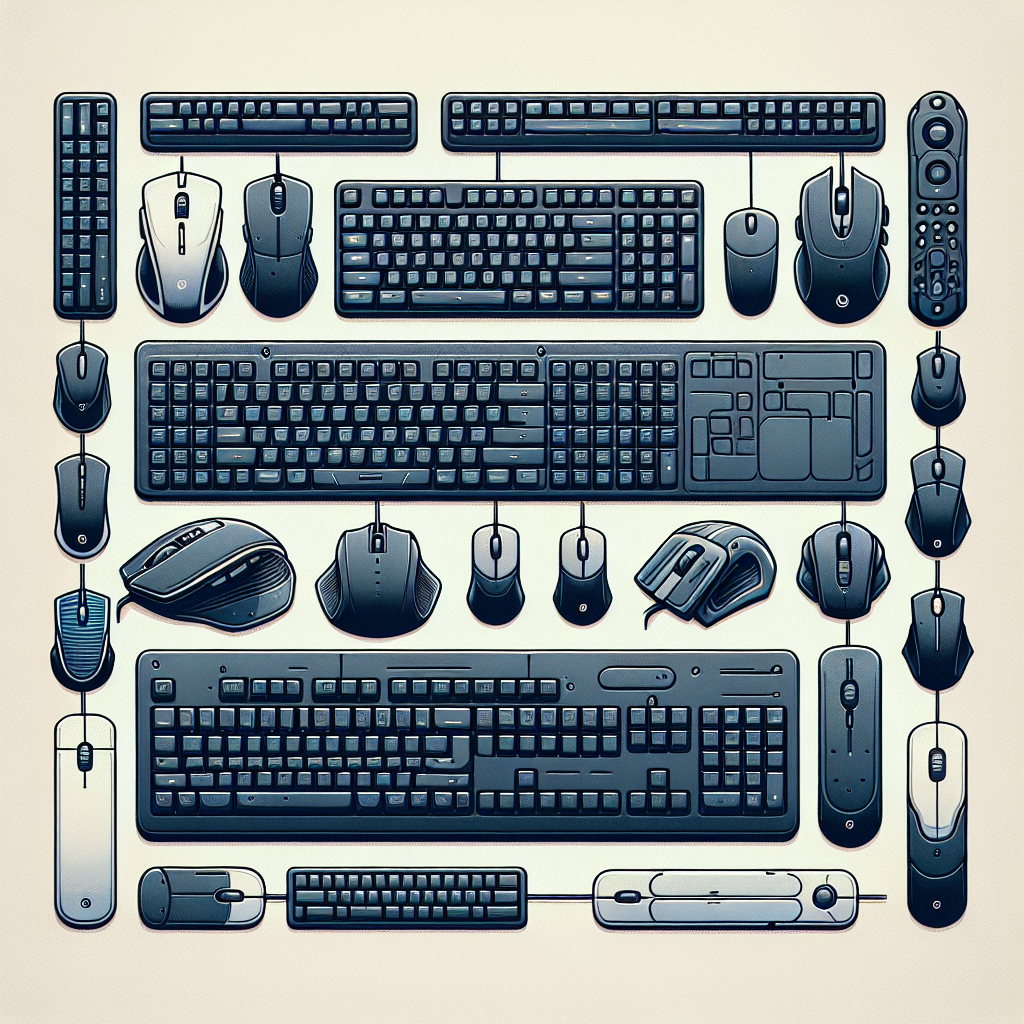Choosing the right keyboard and mouse can significantly enhance your productivity and comfort, especially if you spend long hours at your computer. From ergonomic designs to specialized functionalities, there is a wide array of options available. This article will guide you through the important factors to consider when selecting the ideal keyboard and mouse for your needs.
Types of Keyboards
There are several types of keyboards available in the market, each catering to different needs and preferences.
| Type | Features |
|---|---|
| Mechanical | Tactile feedback, durable, customizable keys |
| Membrane | Quiet, affordable, lightweight |
| Ergonomic | Reduces strain, split layout, cushioned wrist rest |
| Backlit | Illuminated keys, customizable lighting |
| Wireless | No cords, Bluetooth, portable |
Mechanical Keyboards
Mechanical keyboards are known for their tactile feedback and durability. They are preferred by gamers and heavy typists due to their precise keystrokes and longevity. Each key has an individual switch mechanism, which makes them highly customizable.
Membrane Keyboards
Membrane keyboards are quieter and more affordable than mechanical keyboards. They use a softer material under the keys, which can make them feel less tactile. They are lightweight and suitable for general-purpose use.
Ergonomic Keyboards
Ergonomic keyboards are designed to reduce strain on your hands and wrists. They often feature a split layout and a cushioned wrist rest, promoting a more natural typing posture. These keyboards are ideal for individuals who experience discomfort during long typing sessions.
Backlit Keyboards
Backlit keyboards come with illuminated keys, making them useful in low-light conditions. Some models offer customizable lighting options, allowing users to change the color and brightness according to their preference. They are popular among gamers and professionals who work in varying lighting environments.
Wireless Keyboards
Wireless keyboards eliminate the hassle of cords and offer greater portability. They connect to your computer via Bluetooth or a USB receiver. While they offer convenience and a cleaner desk space, it is important to consider battery life and potential connectivity issues.
Types of Mice
Just like keyboards, there are several types of mice designed to meet different needs.
| Type | Features |
|---|---|
| Optical | LED technology, smooth tracking, reliable |
| Laser | High precision, works on various surfaces |
| Ergonomic | Reduces strain, contoured shape |
| Gaming | High DPI, customizable buttons, fast response |
| Wireless | No cords, Bluetooth, portable |
Optical Mice
Optical mice use LED technology to detect movement. They offer smooth tracking and are generally reliable for everyday use. However, they might struggle on glossy or reflective surfaces without a mouse pad.
Laser Mice
Laser mice provide higher precision and can work on a variety of surfaces, including glass. They are suitable for applications that demand accuracy, such as graphic design and gaming. However, they can be more sensitive to dust and debris.
Ergonomic Mice
Ergonomic mice are designed to fit the natural contour of your hand, reducing strain and discomfort. They come in various shapes and sizes, including vertical mice, which promote a more neutral hand position.
Gaming Mice
Gaming mice are equipped with high DPI (dots per inch) sensors, customizable buttons, and fast response times. They are specifically designed to enhance gaming performance but can also benefit users who require precision and speed for other tasks.
Wireless Mice
Wireless mice offer the convenience of a cord-free experience. They connect via Bluetooth or a USB receiver, providing mobility and a clutter-free workspace. Like wireless keyboards, it is important to consider battery life and potential connectivity issues.
Factors to Consider
When choosing a keyboard and mouse, consider the following factors:
- Compatibility: Ensure the keyboard and mouse are compatible with your operating system and devices.
- Ergonomics: Look for designs that promote comfort and reduce strain, especially if you use them for extended periods.
- Purpose: Choose based on your primary use, whether it’s gaming, professional work, or general use.
- Connectivity: Decide between wired or wireless options based on your mobility needs and workspace setup.
- Budget: Set a budget that balances quality and features.
- Additional Features: Consider extra features like programmable keys, adjustable DPI, and backlighting.
- Reviews: Check user reviews and ratings to gauge performance, durability, and user satisfaction.
Conclusion
Choosing the right keyboard and mouse is crucial for maximizing comfort and efficiency. By understanding the different types available and considering key factors like ergonomics, purpose, and budget, you can make an informed decision. Remember to read user reviews and consider additional features that may enhance your experience. With the right keyboard and mouse, you can significantly improve your productivity and computing experience.
